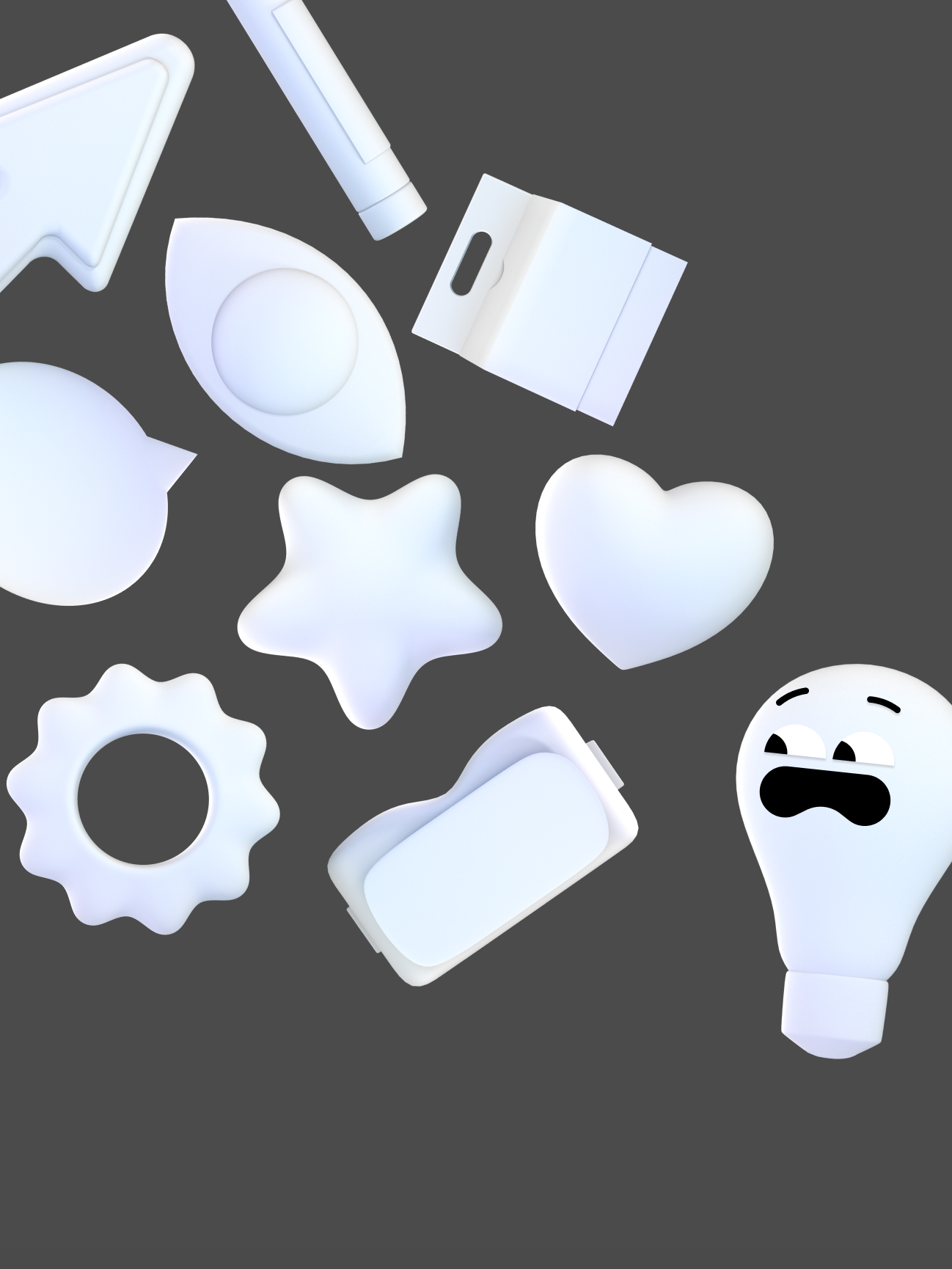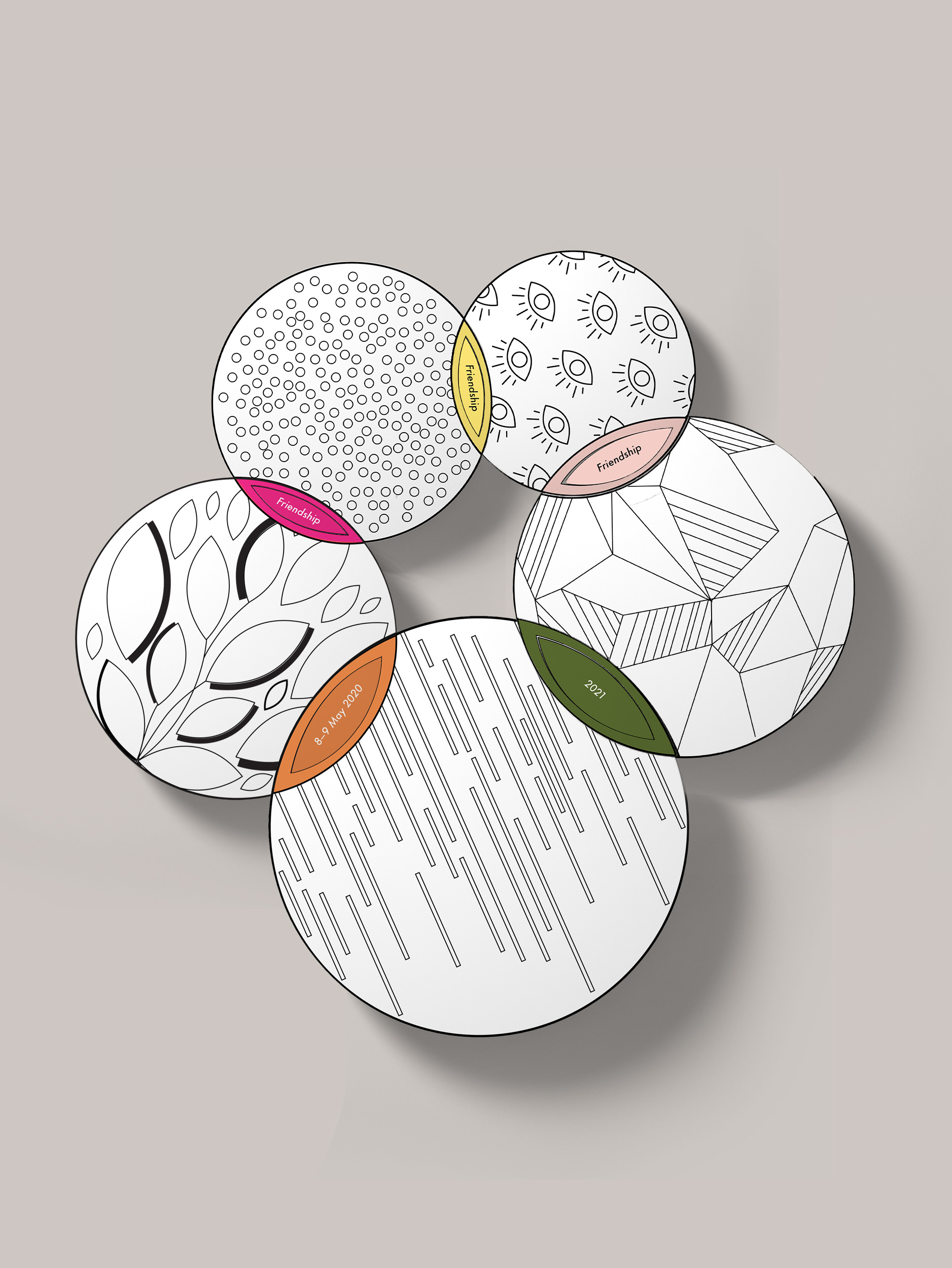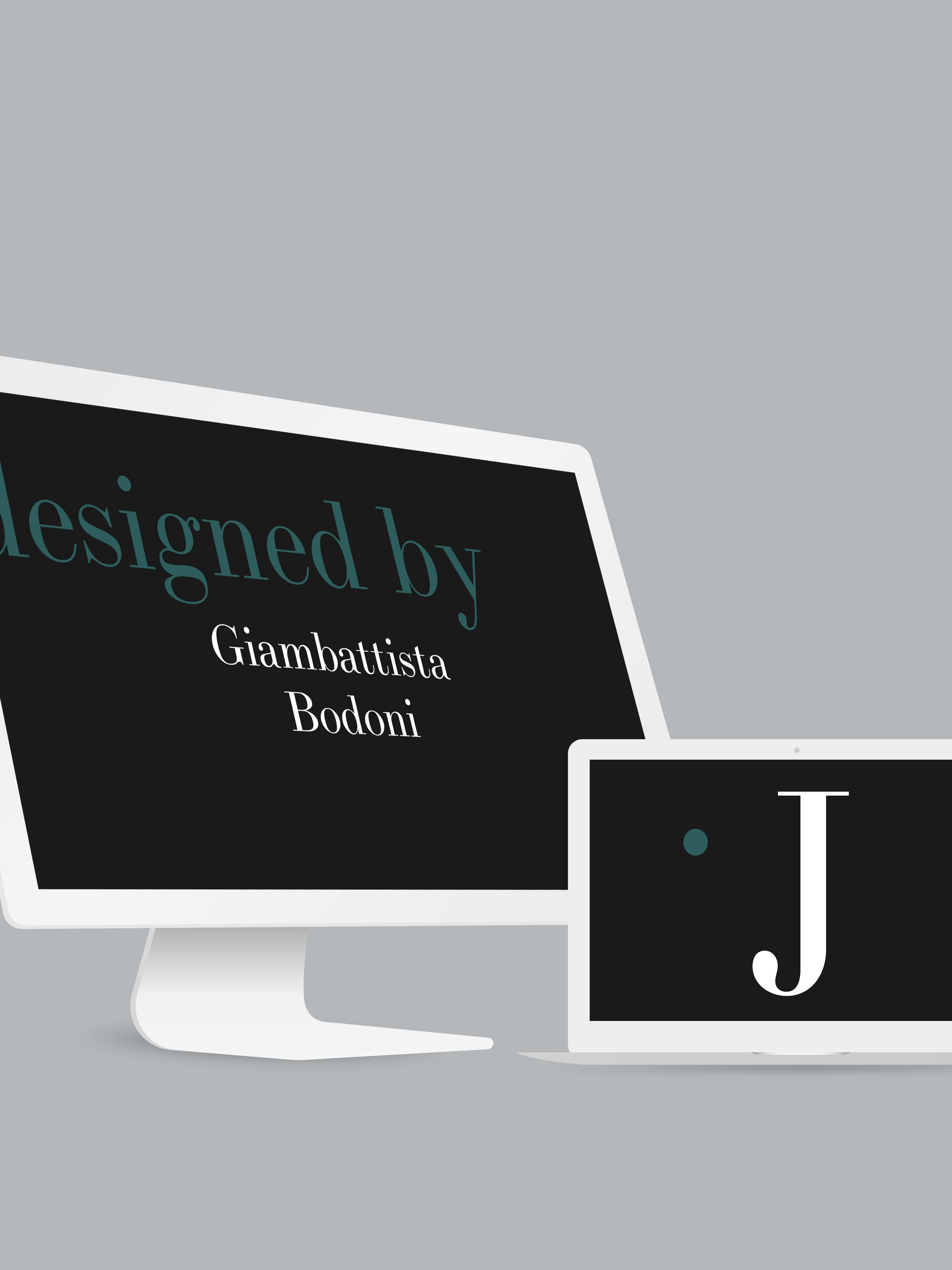Overview
Understanding the interaction between people and design in a system.
Studying the process of gathering data and using research findings to produce a redesign of the artifact, space, service, or interface.
Service Design
Contributors: Stefanie Suk, Elizabeth Han, Caroline Song, Yoshi Torralva
Duration: 8 weeks
Summary
How might we improve the bus transit experience for students at CMU? While students at CMU pay an annual fee of $75 for public transportation, they often opt for services like Uber and Lyft over the existing transit system when choosing services for mobility. Using human-centered research methods, our group investigated various leverage points in the Pittsburgh bus system to make public transit a more accessible option for students to take advantage of.
The poster below gives a comprehensive overview of our research process.
Check out the process documentation here.
Intervention Poster
Stakeholders
We started out with mapping out different stakeholders that are affected by the public transportation system to find out who we are designing for. This process helped us discover the key groups within the stakeholders to take into consideration.


Research
Our team conducted three different research methods to get a better understanding of our stakeholders and their relationship with public transportation.
Findings
The most common problems we discovered from our research were overloaded bus and inaccurate real-time data.
People experienced discomfort as buses frequently arrived at unexpected times. Especially during rush hours, overloaded buses would skip several bus stops. We found out that students had more negative experience with public transportation in Pittsburgh than positive ones.
With our stakeholders' responses, our team was able to discover the value systems when it comes to choosing a transportation method.
Prototyping Intervention
Our team focused on designing three features using the most common complaints we found in our research. These features would ideally be able to be incorporated into any transportation application.
1. Humanizing the bus driver
Giving a profile to the bus driver and displaying the name of the driver, in order to allow the riders to feel more comfortable going on the bus now that the person driving the bus is more humanized and approachable.
2. Bus rewards
Developing a reward system with the number of miles each rider has ridden. Within that bar are multiple thresholds where you can unlock different statuses to reach being a Gold Rider. There are rewards for different local businesses around Pittsburgh that can be used when the rider uses the bus to get there. This will inspire the students to ride the bus and explore the city of Pittsburgh more, using the bus system.
3. Bus sensor
Tracking the amount of riders that are on the bus using a bus sensor on each bus. Data will be sent to the app and update people waiting for the bus if that specific bus is likely to pass them or not. This is helpful during rush hours and times where people are unsure the bus will pass by when trying to get to your destination.
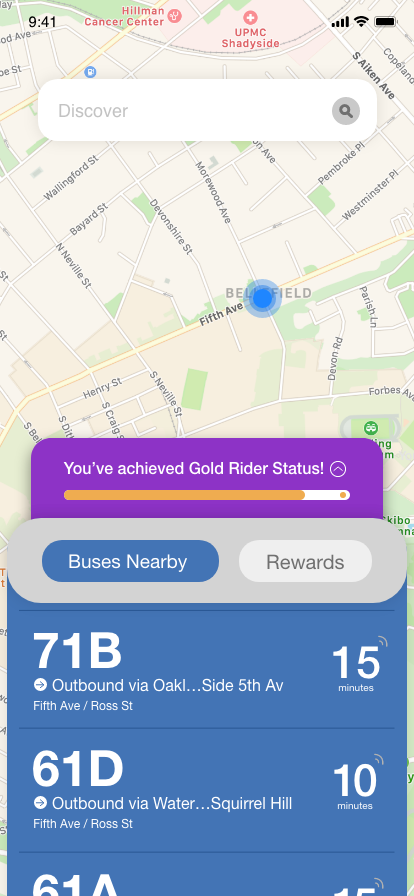
Real-time Data
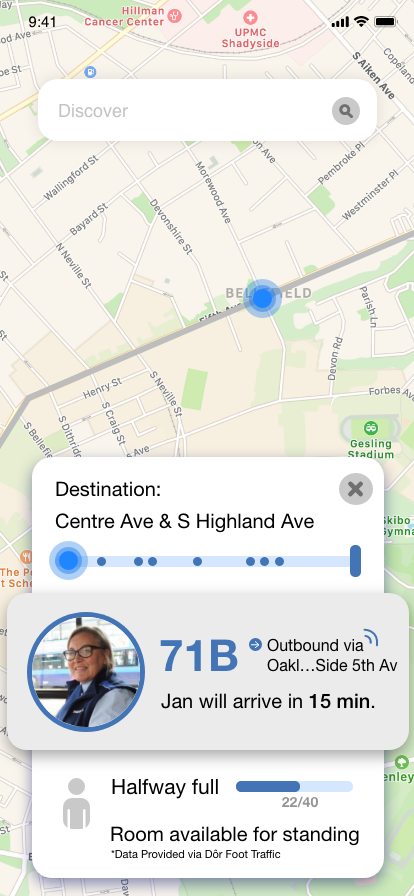

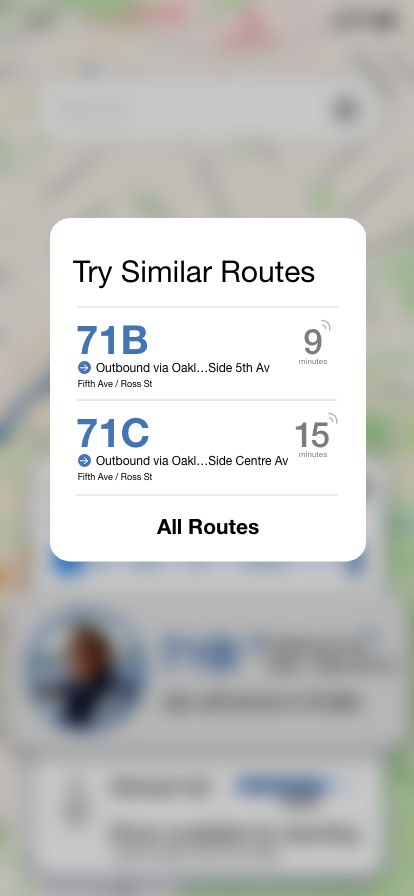
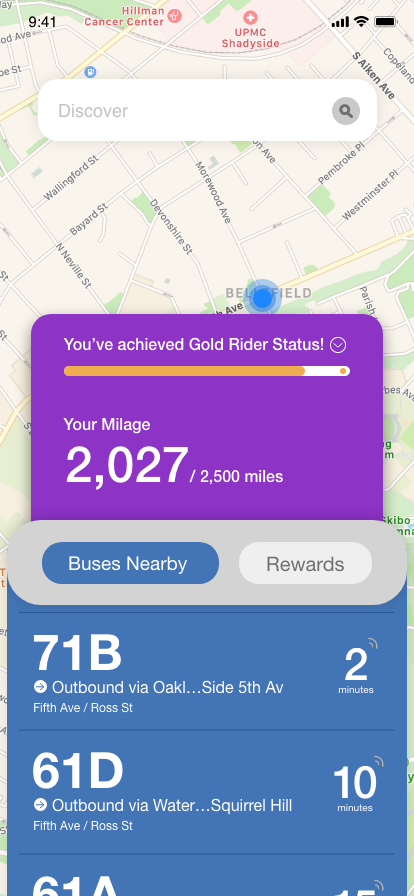
Rewards
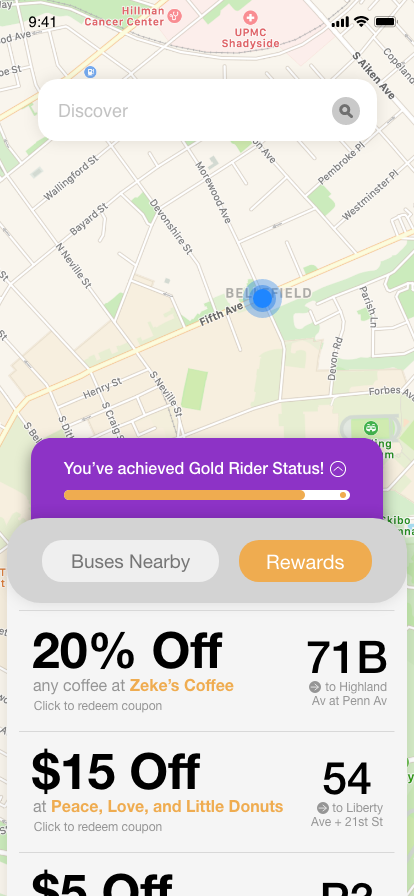
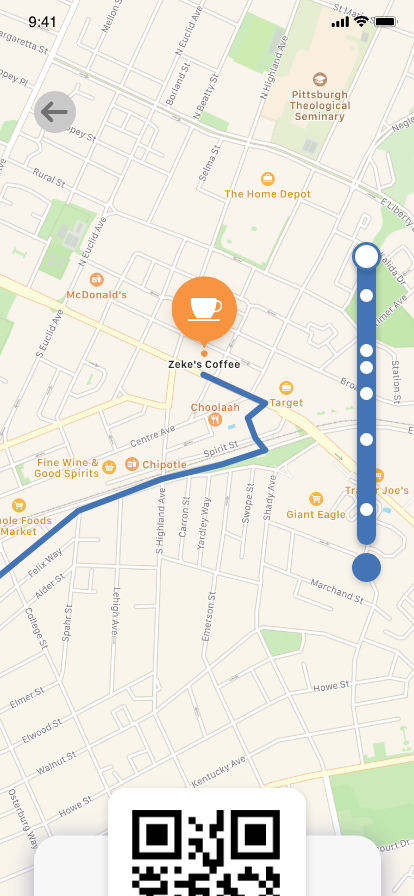
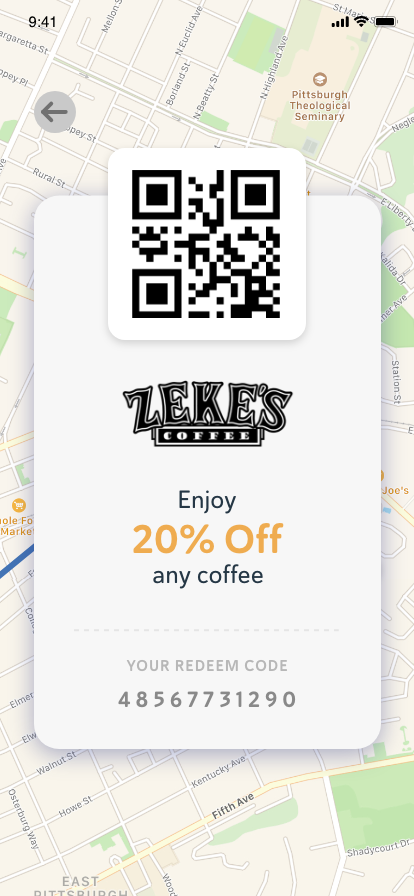
Programs Used
Adobe Photoshop, Adobe Indesign, Adobe Illustrator, Adobe XD
